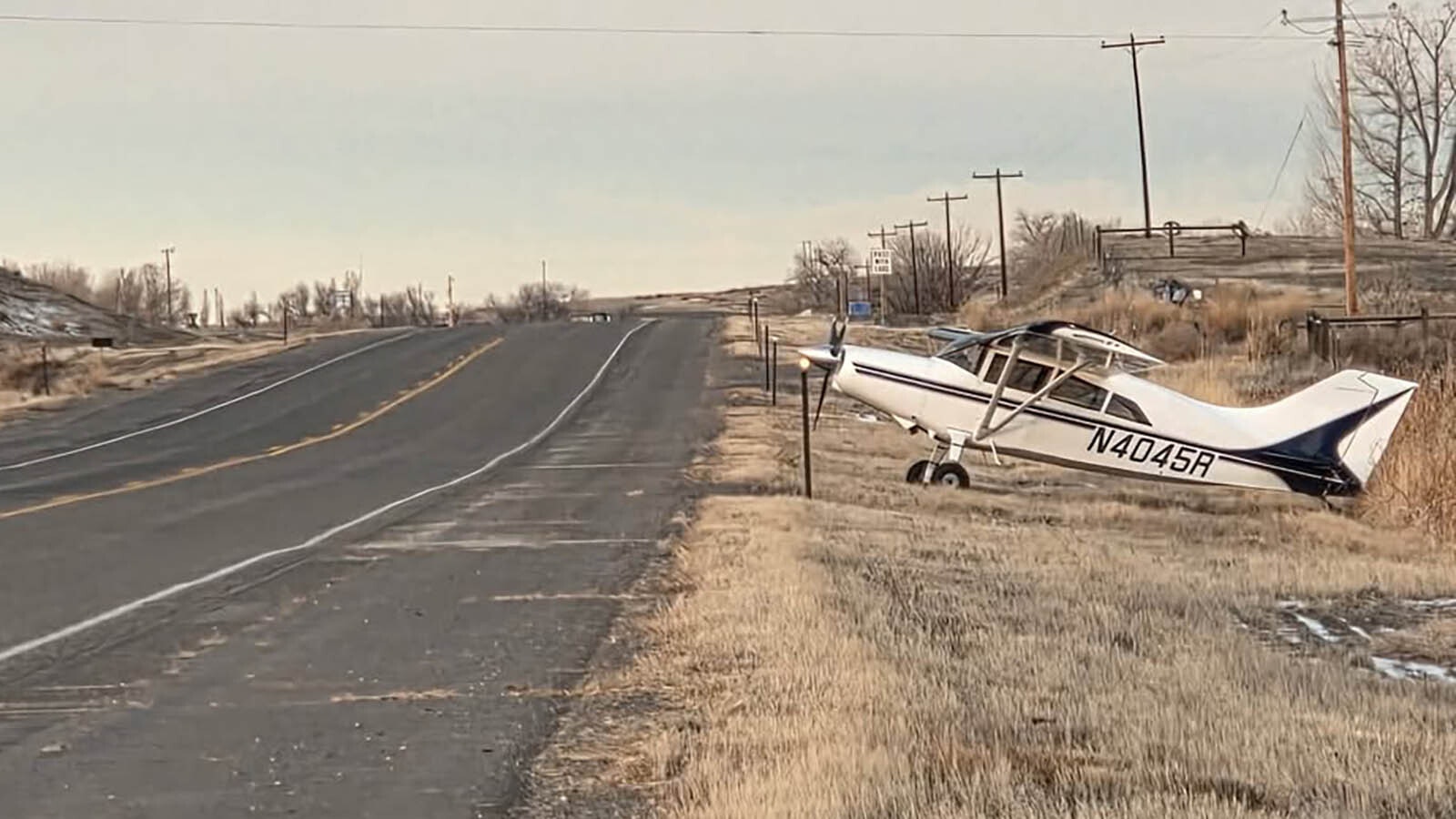CHEYENNE — F.E. Warren Air Force Base has a secret underground world full of airmen-created artwork that most people have never seen.
They’re getting noticed now, however, thanks to a new coffee table book by a former missileer named Jim Warner who is determined to save these underground murals that chronicle a unique perspective of America’s military history ahead of the replacement of the base’s Minuteman III missiles with LGM-35 Sentinels.
Missile murals, as they’re called by the servicemen and women who have painted them over the decades, chronicle and commemorate special occasions and milestones of note in the relatively small community of people who have served as missileers over the years.
The most common murals are for what’s called, in the PG translation, Last and Final Alerts (LFA). It’s a last tour of duty inside a launch control facility where the mission is making sure that the nation’s nuclear missiles are on alert at all times, ready to go at a moment’s notice, 24/7.
The crews that do this take turns in two-man teams on 12-hour shifts living in what is essentially an underground bunker isolated from the rest of the world.
Other murals commemorate special occasions or milestones that happened during a shift, like the one called “Code Change Girls,” painted by Kimberly Girgenti.
Girgenti, today a flight commander, still remembers the occasion well. It was the code change of 2022, a rather intense (some might say dreaded) annual event in which all of the encryption keys and codes for the nuclear missiles get changed across all of the Air Force’s missile wings and squadrons.
At that time, it took thousands of personnel weeks to complete. It is, thanks to technology, a much simpler process these days.
“We happened to be the only four girls who all got put on the same alert wave for the same operation,” Girgenti told Cowboy State Daily. “And we just so happened to realize that each of us resembled the personalities of the ‘Golden Girls.’”
That realization came about as the women assembled charcuterie boards during their downtime for dinner, after which they would often stream old episodes of the popular 1980s sitcom, which was a cultural touchstone for many.
They decided Girgenti was Dorothy, while Stephanie Burgess was Rose, Keeshia McDonald was Blanche, and Jessica Ruffa was Sophia.
So Girgenti painted her mural accordingly, with each member of the crew in a pose reminiscent of the “Golden Girls” publicity photo, on a wall just outside the launch control capsule where future alert crews would see it.
“Any time you see one of these (murals), it’s not because we just got bored,” Girgenti said. “Most of the murals commemorate either an operation or an exercise or someone’s last alert.”
Collectively, such murals, which didn’t start becoming a permanent part of the underground landscape until the late 1980s to early ’90s, chronicle the history of the men and women who have served their nation as missileers.
It is an elite job, but one that’s been done largely in silence and in secret. These underground murals are a rare chance to express some pride and patriotism in the work, and sometimes a little bit of humor.
A Thankless, Unknown Job
The murals have rarely been seen by the general public given where they are located and understandable prohibitions on talking in any detail about what missileers do.
But now the history is coming to light in a big way with a huge coffee table book that’s been put together by former missileer Jim Warner, now a retired Air Force colonel and executive director of the USAF Association of Air Force Missileers.
He was determined to save these expressions of patriotic history by the men and women who have been called to a uniquely important duty for America, keeping the nation’s nuclear missiles at the ready, a deterrent against other countries that also have nuclear missiles.
“I took it on as a personal project,” Warner told Cowboy State Daily. “I’ve been retired for a couple of years and was looking for something to keep me occupied.”
His other goal, though, was to just talk a little about an honorable occupation he knows not many people know much about.
“If you go up to Rock Springs, as an example, or Jackson Hole and say, ‘Where do we have Minuteman ICBMS on alert?’ they’ll probably go, ‘What’s a Minuteman?’” Warner said. “The American public from sea to shining sea just doesn’t understand this mission and its importance.
“So, this book is meant to help do that in an easy-to-understand way.”
Warner became a missileer in 1974 without much prior knowledge of the job ahead of him.
“If you weren’t qualified to fly, or you didn’t want to fly, missiles were the next best thing,” he said. “But I really didn’t understand it until I got to Ellsworth (Air Force Base in South Dakota) in 1974, to be exact.
“That’s when I started understanding the importance of the mission, and the fact that it’s a very complicated and a very deadly — potentially deadly — mission.”
It didn’t take long for the gravity of the work to sink in, and that was motivating. He wanted to do his best every day.
At that time, murals weren’t allowed. While some rebel was always painting something on a wall, when the brass came through for inspection, the order would quickly come down to paint over it.
Over time, though, that rule began to relax, and the murals came to be seen as an important function of morale, as well as a way to capture some pride and history.
Warner looks back on his time as a missileer as one of the best things he ever did in his life.
“It’s a thankless job, it’s an unknown job, and you can’t talk a lot about it,” he said. “You can say we have missiles on alert defending our country. But those who are doing that today quickly get into, ‘I can’t talk about that,’ and so does our association, me personally. But we see it as a responsibility to share the understanding of the mission so other people can appreciate it.”
Humor With A Point
A book about technical statistics wouldn’t get read, Warner realized. But a book full of artwork by the missileers was something he felt people could instantly relate to.
And he was right.
The book is so far getting rave reviews from former missileers like Girgenti, who bought one for her own coffee table and sees it as a fantastic way to preserve the history on the walls.
That’s something she always looks forward to seeing when she gets a chance, particularly as word spreads among the ranks whenever a particularly moving mural is finished.
Retired Air Force Col. Tucker Fagan, one-time commander of F.E. Warren whose military career started out as a missileer, also is a fan of the new book. His favorites are the humorous murals that make a point tongue-in-cheek.
Like the mural on the blast door at Ellsworth Air Force Base. It’s a Domino’s pizza box with the word “Minuteman” on one side of the box in the signature blue color the pizza chain uses.
Above it, there’s advertising text that promises, “Worldwide delivery in 30 minutes or less, or your next one is free.”
The idea for the mural came about because when the missileers requested red, white, and blue paint to create an American flag on the wall, the color blue was all wrong. So instead of a flag, they painted the pizza box instead.
The humor and the serious point is something anyone who has served as a missileer would instantly relate to, Fagan said.
“The missile community, generally, is not a very big community when you look at the Air Force as a whole,” Fagan said. “We, I almost say, kept to ourselves and looked after ourselves.
“And the depictions on the walls and other cartoons are just a function of, ‘Hey, we’re somebody, and we can laugh at ourselves and do the work and do it safely and honorably.’ To me, it’s a good part of the humanity of people who were pulling alerts.”
Fagan has been asked from time to time about his job as a missileer and how it affected his mental state, knowing he was part of a system with a perpetual finger always on the trigger of the nation’s nuclear weapons.
“People would ask, ‘Could you sleep at night?’” Fagan said. “The reality is, we were people with families and moms and dads, brothers and sisters, kids, wives, spouses. And so, the murals are just a manifestation of the humanity of the people who did a lot of work from way back when to even now.”
Fagan also believes not many people realize what goes into keeping the nation’s nuclear deterrence in an ever-ready state.
“Most people don’t even know they’re still out there,” he said. “And the alert force means, if the President says, ‘We’re under attack right at this minute, what retaliatory weapons do I have available?’ It’s the ICBM (intercontinental ballistic missile) force and the submarine force that are in range of their targets.”
Renée Jean can be reached at renee@cowboystatedaily.com.


















